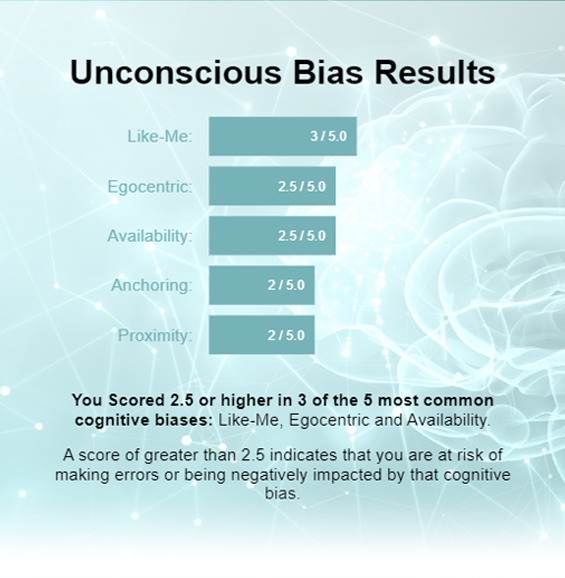Proximity Bias & Unconscious Bias
Proximity Bias is when we unconsciously favor whatever is closest in time and space. Seems harmless, right? Seems natural to prefer that which is near and dear to us. However, in a primarily virtual, and ever-growing remote workforce, we end up undervaluing whatever is further away. Those colleagues in remote locations. The processes that are farther away. With Proximity bias, we pay attention and give value to whatever or whoever is literally closest to us.
In the last 30 years, many of our office environments have changed from a set geographic area where each person has a defined location at a defined time to a wide variety of office arrangements to include open office plans, tele-commuting, coordinating across multiple office locations around the world, and flexible working hours. All of these are impacted by Proximity Bias.
It is easy to favor the people in one’s immediate environment, and as a result, they get consulted more often, asked questions and can participate in an office community more easily than those who are farther away. Convenience wins. In addition, we are able to read each other’s body language when we are proximate to each other, which is much more challenging with video or phone calls. And we all know how simple it is to misinterpret the tone in an email or text.
Imagine you are in a meeting about your company’s latest product line, marketing idea or sales call, with a few people dialed in remotely. The in-room conversation picks up, with side conversations, people writing on a whiteboard, making eye contact and facial expressions–all of these leave those not in the room left out and excluded. Anyone who has been connected remotely to a meeting knows the feeling when something is going on in the room that you are not understanding–whether it’s tension or mutual agreement–it’s hard to read from afar. The planning mistake most often made is simply preparing for the meeting as if everyone is in the same physical room. Our office environments are not going back to the days of everyone working the same hours in the same locations, so learning how to mitigate Proximity Bias is important if you want to increase productivity and meeting efficiency.
There are a wide range of preparatory steps that can be taken that go a long way towards promoting inclusion. When people are calling into meetings or many remote locations are working together, several techniques can be used to bring everyone together. First, make sure that all in-room conversations can easily be heard by those participating remotely. In many remote meetings, the facilitator and the few people near them can be heard but everyone else becomes background noise. The meeting facilitator must be vigilant about inviting remote participants to share ideas, recognizing that not being able to see interactions can intimidate and ultimately prevent those not in the room from sharing. The facilitator must deliberately plan to include remote participants–too often a meeting is not designed for remote participants, whether by talking in partners or brainstorming as a group or coming to consensus. All of these can be configured to include remote participants. Also, during virtual meetings, remote participants can be assigned a role for the duration of the meeting to keep their active involvement within the room. Remember, if as a leader are not intentionally including people in disparate locations, you will inevitably exclude them.
Proximity Bias can operate even when everyone is in the same office space. The location of individual offices can make a big difference–we tend to know and collaborate with those nearest to us, especially if we have a quick question. Managers must be mindful of where they are physically located and expand the range of people who they work with and talk to on a regular basis, making sure to reach everyone in their team and beyond. Sometimes these plans can backfire. With the intention of increasing accessibility and communication within an organization, most offices now have open floor plans. However, this technique to mitigate Proximity Bias has unfortunately created more isolation. One study found that under an open office plan, face-to-face interaction decreased 70% and workers communicated more with email. Isolation was increased as people used noise-cancelling headphones and didn’t talk to each other because their conversation would be distracting to others in the room. The idea was good in theory, but in reality it created additional barriers to communication. In open office plans, we are sometimes too close to effectively work together.
Whether it is within several remote office spaces or under one roof, Proximity Bias can play a negative role in decision-making. Proximity Bias is easy to spot and most of us have probably been on both sides of this equation–the person excluding others and the person being excluded. From either perspective, the question remains the same: how can you change your behaviors and structure virtual meetings so that you are getting the insight, creativity and wisdom you need from others whether they are in a different part of the office or a different part of the world?

If you have a brain, you have bias!
This 20-question test provides actionable insights. Select the response that closely matches your current state of mind. The design is intended to introduce you to the five most common cognitive biases: Like-me, Egocentric, Availability, Anchoring & Proximity. Results may vary. No data is shared with anyone.

Percipio Company is led by Matthew Cahill. His deep expertise in cognitive, social, and workplace biases is rooted in the belief that if you have a brain, you have bias®. He works with executives to reduce mental mistakes, strengthen workplace relationships & disrupt existing bias within current HR processes, meeting protocols and corporate policies. Matthew has demonstrated success with large clients like LinkedIn, Salesforce and dozens of small to mid-size companies looking to create more inclusive workplaces, work smarter, generate more revenue and move from bias to belonging®.






